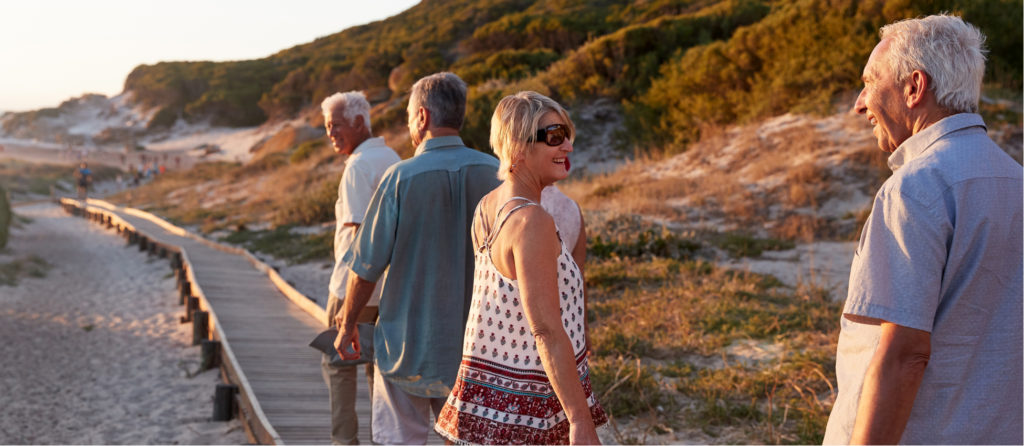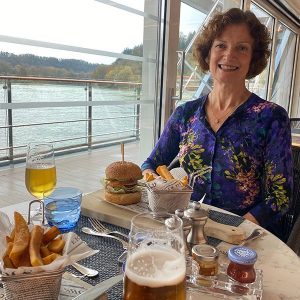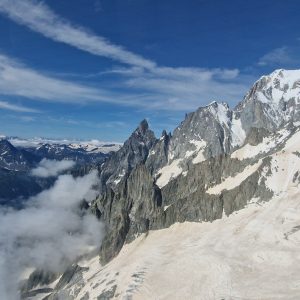Circling Chania for an hour – too wet to land – didn’t bode well
With torrential rain for the next two days we were unable to use the rooftop jacuzzi or sunbeds in our penthouse suite at the delightful Venetian Harbour Monastery Hotel, a restored 16th century nobleman’s house. On the plus side, our double-height suite was fabulous, the hotel served a great breakfast and their lunchtime and evening menu offered interesting, tasty, dishes. But, like pilgrims returning to the holy land, we were delighted to find the hotel was only a few minutes from our favourite Greek restaurant of all time, Inopiio, (Greek for winery). It would have taken a lot more than torrential rain to keep us away from, undoubtedly, one of the best restaurants in Crete. Sfakiana – a cross between pita and pancake – filled with Mizithra cheese, topped with griddled vegetables and almonds, is one of many Cretan specialities for which the restaurant is famous, together with their wine. Delicious, exceptional value.
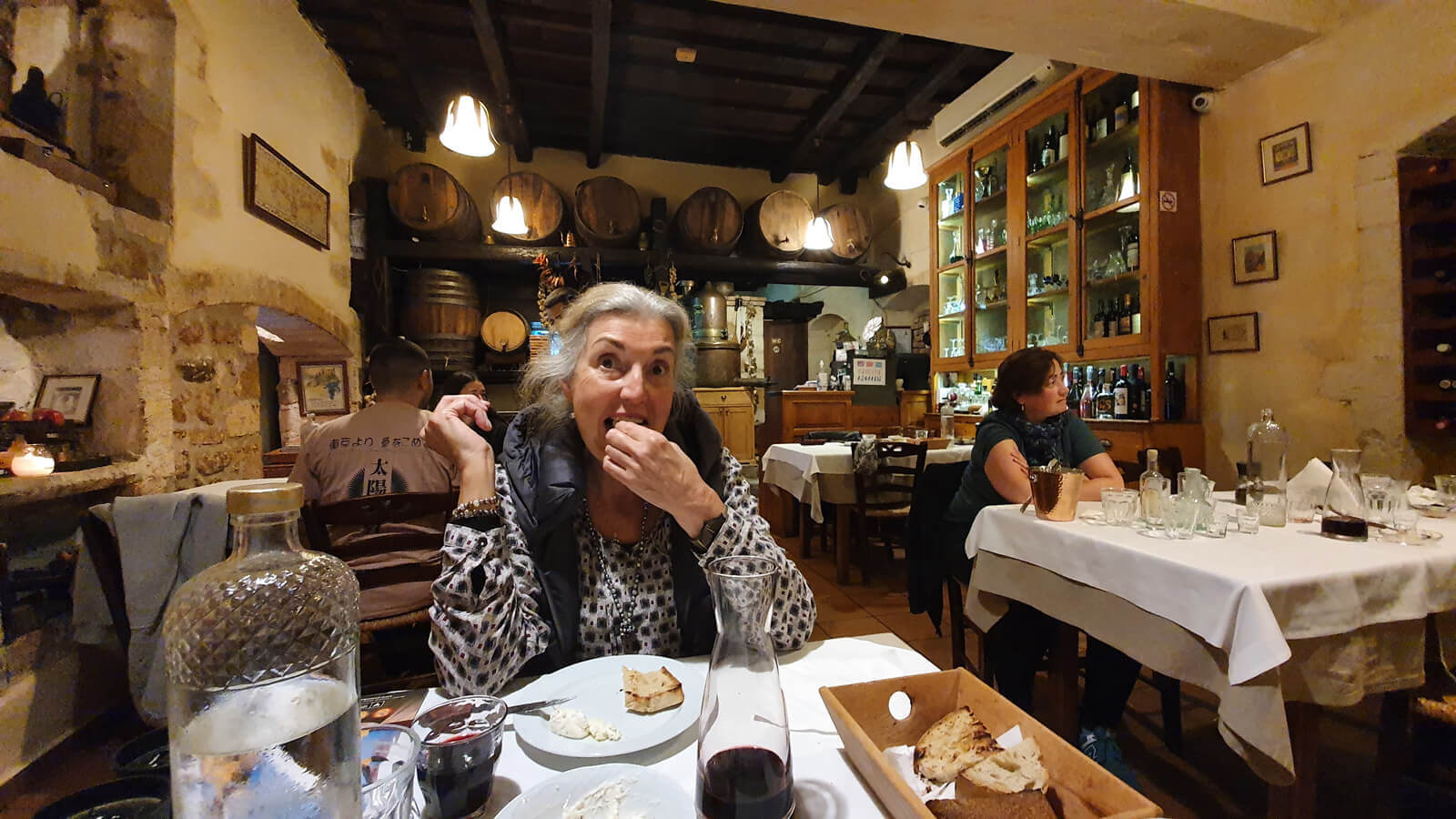
We waded through the city’s empty, narrow, streets, around the ancient Venetian harbour – a very wet, but happy, few days whilst we studied the map and planned an outline route to explore the south east of the island. Travelling at the end of the season can sometimes be tricky as hotels and tavernas start to close for the winter. This year, though, it was extremely difficult finding places open, as many had closed already or, sadly, not opened at all. We decided to plan a day ahead at most and, if unsure, book nothing until we found a place we liked. We hired a car, paid an additional charge so it could be dropped off at either Sitia or Heraklion Airports as our plans evolved and set off.
Our first stop was Rethymnon, another city with an historic Old Town and small winding streets built around a Venetian harbour. With its 16th Century hilltop citadel, Venetian architecture, several museums, a large international university and plethora of restaurants and shops it was fairly buzzing despite the pandemic. Rethymnon also has fabulous beaches but, alas, it wasn’t quite bikini-weather during our one night stay, though it has wetted our appetite for a return visit. We stayed at the excellent Pepi Boutique Hotel, quietly located and within walking distance of everything the compact Old Town has to offer. Happily, the sun appeared in the morning so we breakfasted around the plunge pool in the courtyard garden. At last it felt like our holiday was finally starting as we set off to Knossos, Crete’s most famous archeological site, 5 km south of Heraklion.
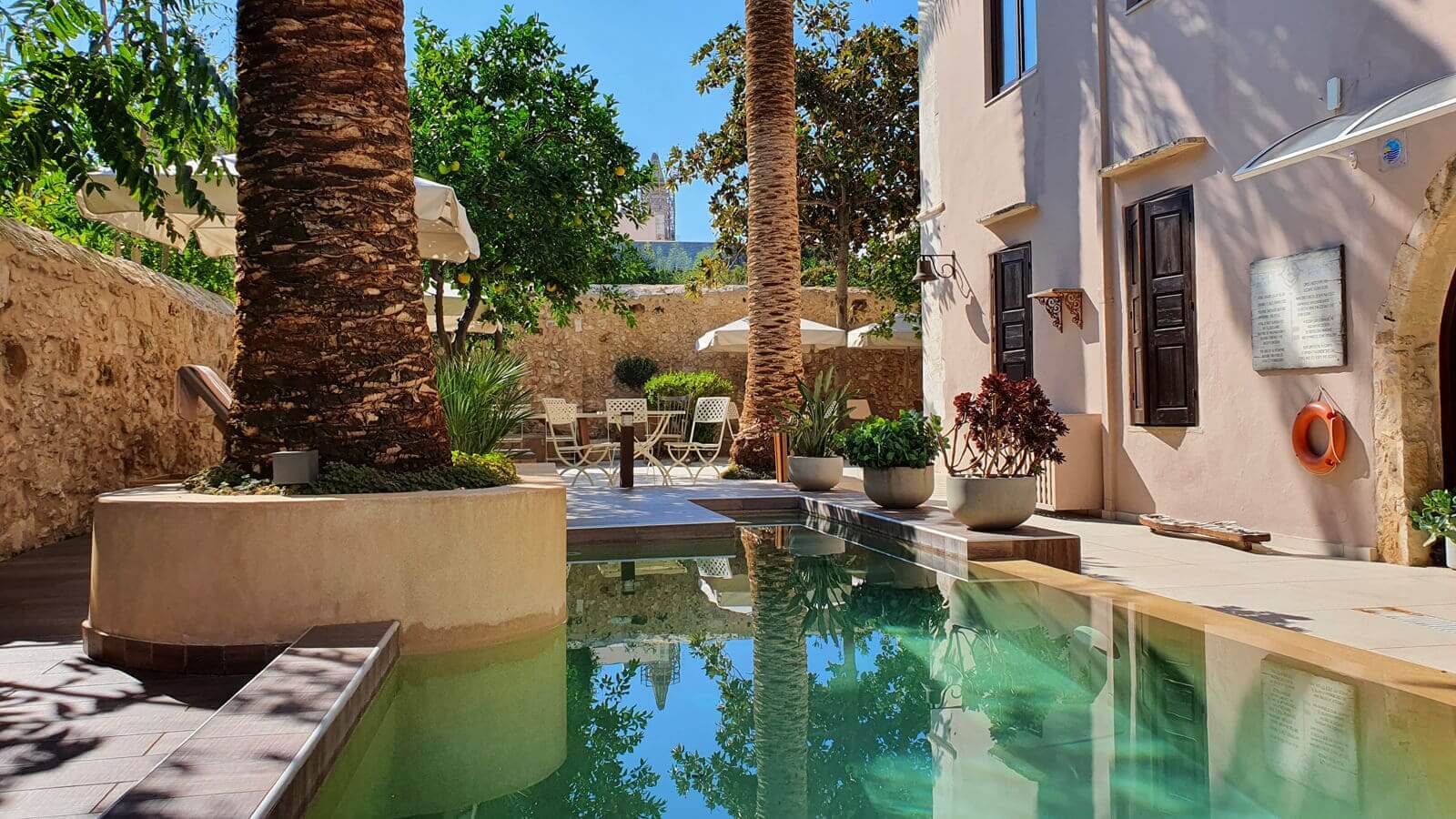
The Palace of Knossos, the centre of Minoan civilization and home of the legendary King Minos, was settled as early as the Neolithic period and is known as Europe’s oldest city. Mostly excavated by Sir Arthur Evans between 1900–1930 the site has been restored though considerable areas are still being uncovered. As one of Greece’s most important archeological sites it can be extremely busy during the summer season but was blissfully empty during our visit, with no queues. A Covid plus point!
We headed inland to the small village of Skalani and the Boutari Wine Estate, a well-known Greek wine maker. Three estate cottages, sympathetically and stylishly renovated (part of the Aria Hotel group), surrounded by vineyards looked very appealing, but with the closure of the Estate restaurant and no vineyard tours due to Covid combined with inclement weather, it was definitely not the best time to stay. Added to which, non-paying residents scurrying around in the roof space all night was not quite the relaxing experience we were hoping for. Next morning, although still rather damp and having had little sleep, our energy was somewhat restored with a wonderful breakfast cooked by the local manager and delivered to our room. Under other circumstances it would have been a treat to stay here and its location makes it ideal to combine with a visit to Knossos.
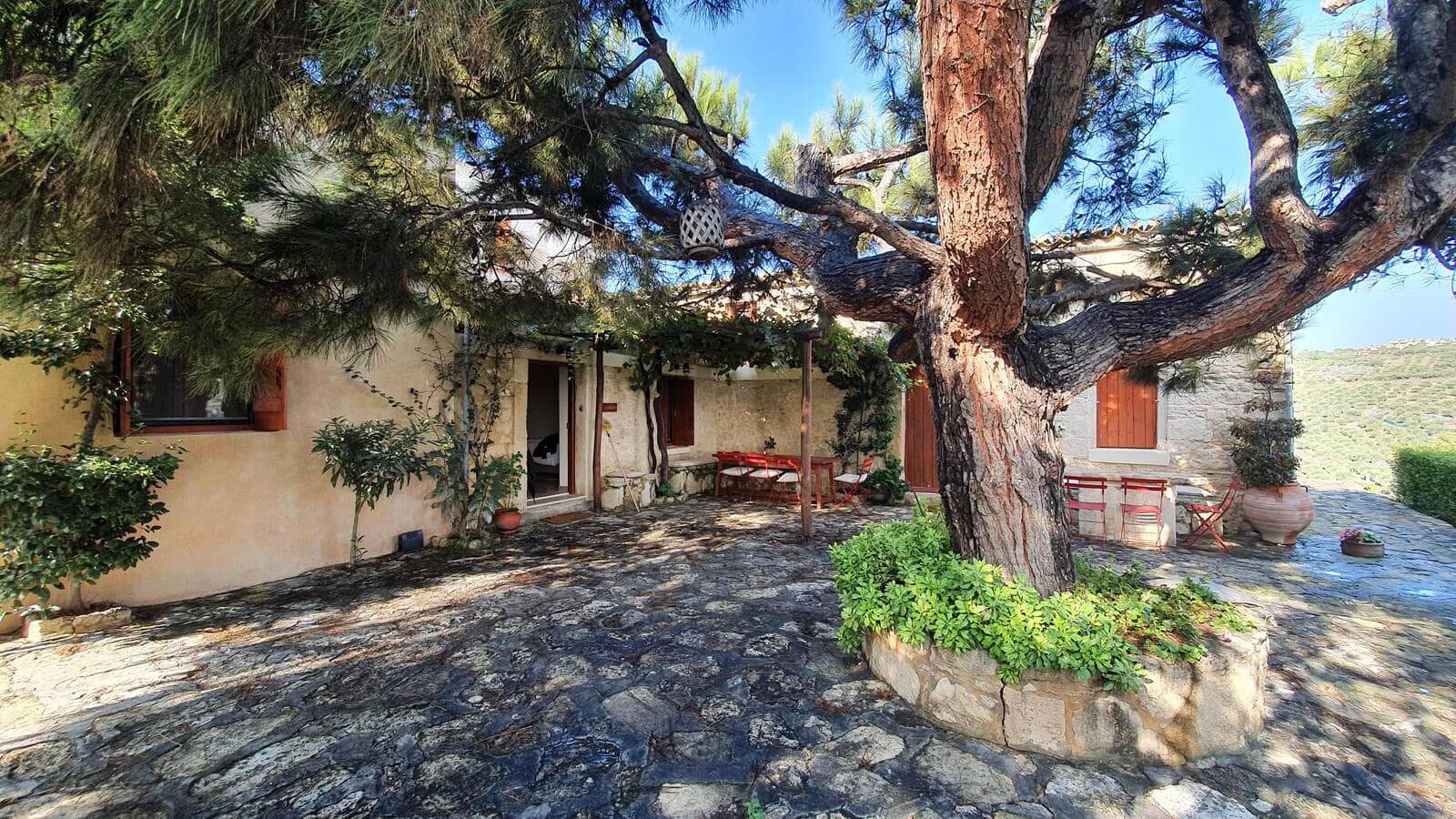
With no other plans or accommodation booked we set off via Ano Viannos to join the main south coast road running eastwards towards the city of Ierapetra. There are a number of relatively undeveloped hamlets and reasonable beaches along this stretch but, unappealingly, much of the coastline is covered with ugly poly-tunnels. As we neared the outskirts of Ierapetra industrial agriculture heavily dominated the landscape. With the number of migrant workers cycling along the road and seen on balconies of rather run-down accommodation one could be forgiven for wondering where we were! We decided to head on through the town and its ribbon development to Koutsounari.
A small enclave of cottages and accommodation tucked away into the hillside, hidden from view of the main road and right on the beach we found what we were looking for. Apothikes Beach Suites (under contract to Simpson Travel during the season) was still open and, though only available for one night, we loved staying here. Lulled to sleep by soothing waves and sitting on the terrace drinking our early morning cuppa on a deserted beach was blissful. The closest taverna was closed, though within five minutes walk there was an excellent beachside fish taverna, Psaropoula. We ordered too many dishes and probably drank too much wine – all excellent – at this long-established family taverna.
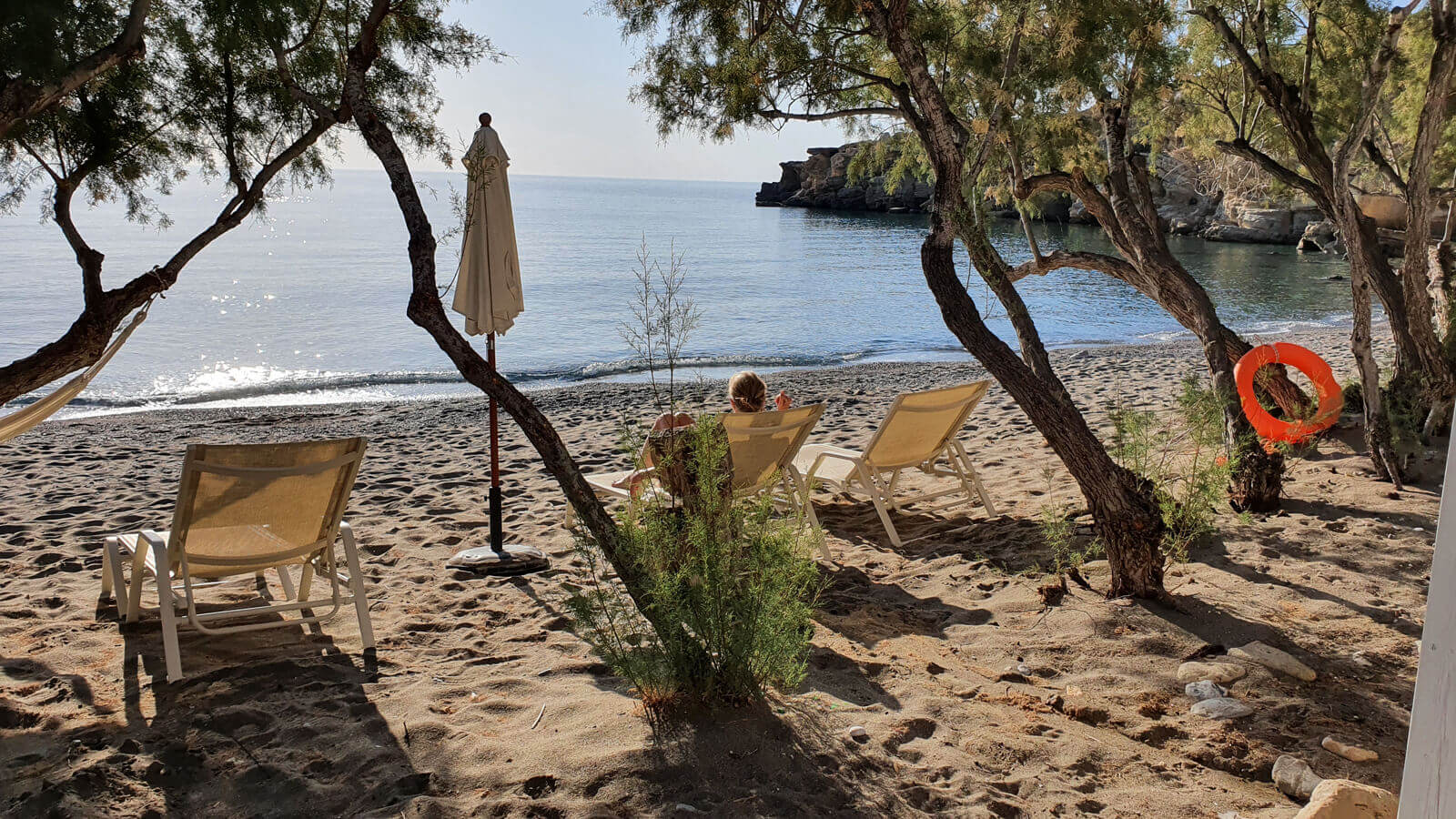
Although the surrounding area wasn’t of much interest to us this small enclave was perfect for relaxing on the beach and, luckily for us, the Kakkos Bay Hotel, on the headland in between the Apothikes Suites and the Psaropoula taverna had only 25% occupancy so plenty of space. Normally sold as an all-inclusive to the German market, in addition to 35 hotel rooms there are 42 well-appointed bungalows in beautiful grounds. We stayed for two nights in No. 115 (the only detached bungalow) located very close to the beachfront, yet secluded. The facilities are good and include several pools, a fabulous beach front and access to the newly built adjoining adult-only sister hotel, Kakkos Beach, which had a stunning bar on a rocky promontory overlooking two bays. With limited guests and end of season menu the on-site taverna was not at its best, so we happily returned to the excellent Psaropoula.
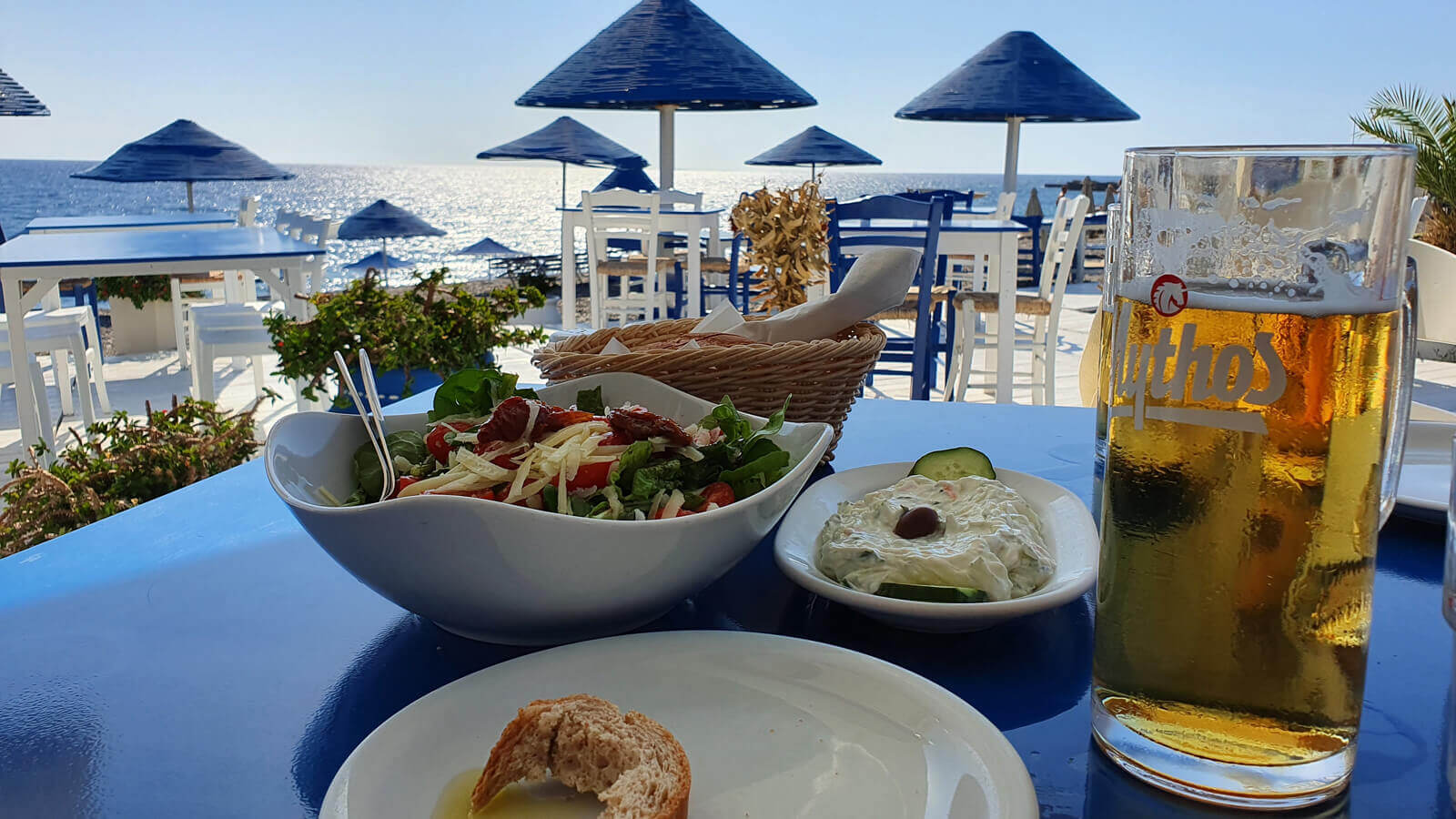
Our next destination, Makrigialos, was a short drive away. Once a small fishing hamlet it has a plethora of cafes and tavernas along the pedestrianised promenade abutting the sea and sandy beach. Unfortunately, though, new developments in and around the village are spoiling what once must have been a gem of a destination as sadly, like much of this part of the southern coastline concrete shells of hotels and other unfinished tourist facilities were very much in evidence. We did find a lovely place to stay, though, and spent two nights at the White Pearl Studios. Spotlessly clean, extremely comfortable, budget accommodation with cooking facilities, complete with palm trees directly overlooking the sandy beach. A great place to watch the waves crash dramatically onto the beachfront below during yet another storm!
During a hiatus in the storm we paddled along what was left of the beach and stopped for a drink in The Rock Bar – one of the few establishments open – right at the water’s edge. Here we savoured a beer and chatted to the Mancunian owners about – what else – how they and the area had fared during 2020. Needless to say, not well, but at least they were still open. We also ventured further east along the coastal road towards the village of Goudouras, another area dominated by agricultural poly-tunnels against the backdrop of a harsh, unforgiving, rocky landscape. En-route we passed the impressive, isolated, Mona Kapsa, a 15th Century Eastern Orthodox Monastery built on a steep rocky mountainside at the end of Perivolakia Gorge. Still occupied by a small number of monks the monastery is normally open to visitors and, I understand, worth a visit.
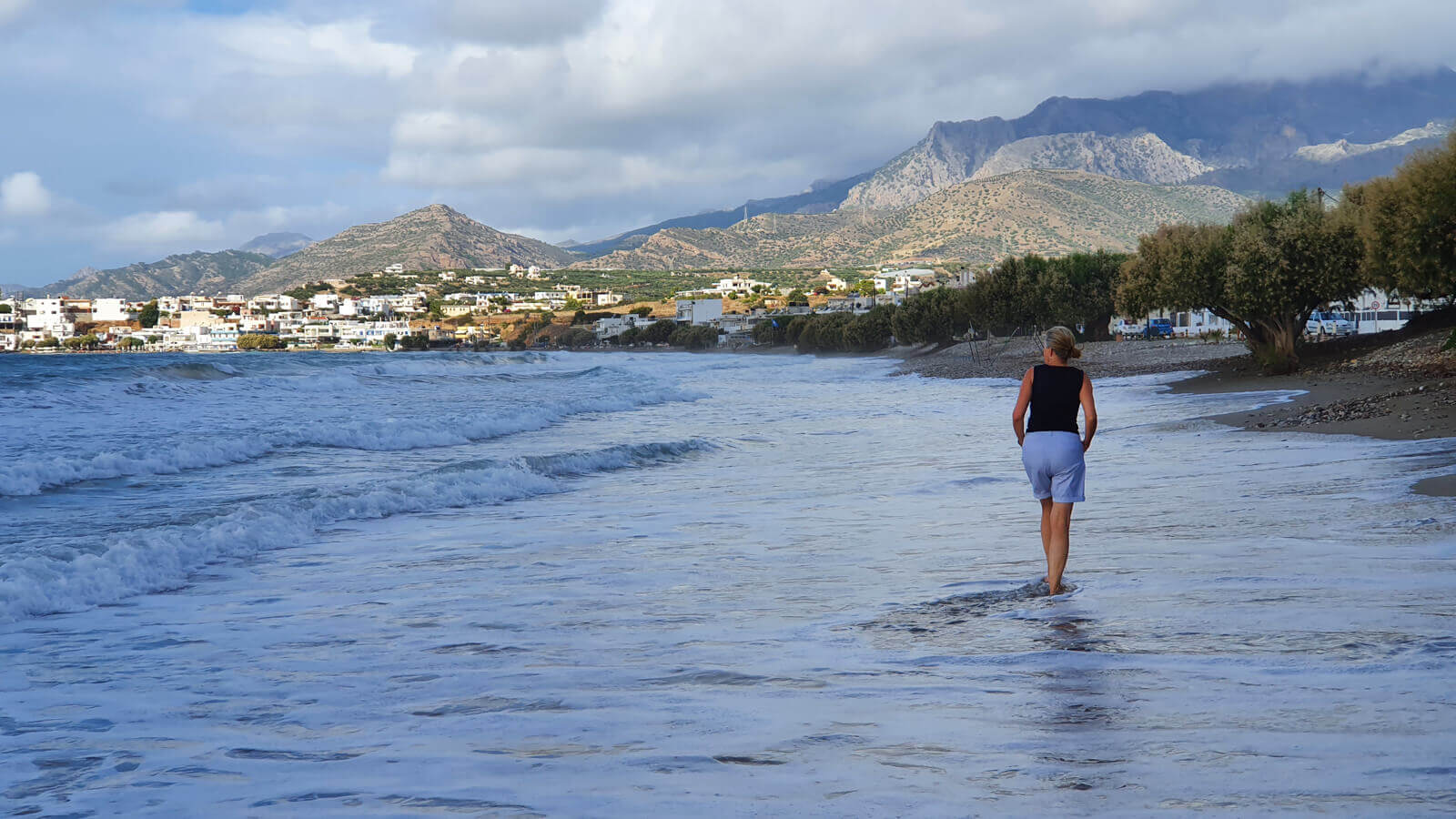
We left Makrigialos and headed inland via Ziros back down to the coast. Approached via an extremely steep and winding road Xerokambos is in the UNESCO natural geo bio diversity park that covers over 500 sq km of Eastern Crete. With a large number of mountainous caves, gorges, fossil sites and serious hiking trails this is a haven of mountain villages and unspoiled beaches. We would have loved to have stayed, but sadly nothing was open, though I did notice several upmarket Simpson Travel villas – they always find the good places! There were also some older typical village houses, an undeveloped sandy beach and a few windsurfers tacking along the bay with their trademark camper vans parked nearby.
Driving back inland the landscape changed as we drove through huge swathes of olive farms through the small picturesque village of Zakros, one of the main centres for Cretan olive oil production. From here we drove to the famous palm-tree beach at Vai. Home to the largest natural palm forest in Europe, this is the closest you will ever get to a Caribbean beach without actually going there. White sand, palm trees, turquoise blue sea, sunshine and very few visitors – perfect. A real, unexpected, gem only 2 km away from Vai, the ruins of the ancient Minoan city of Itanos with its own lovely beach which is definitely worth a visit.
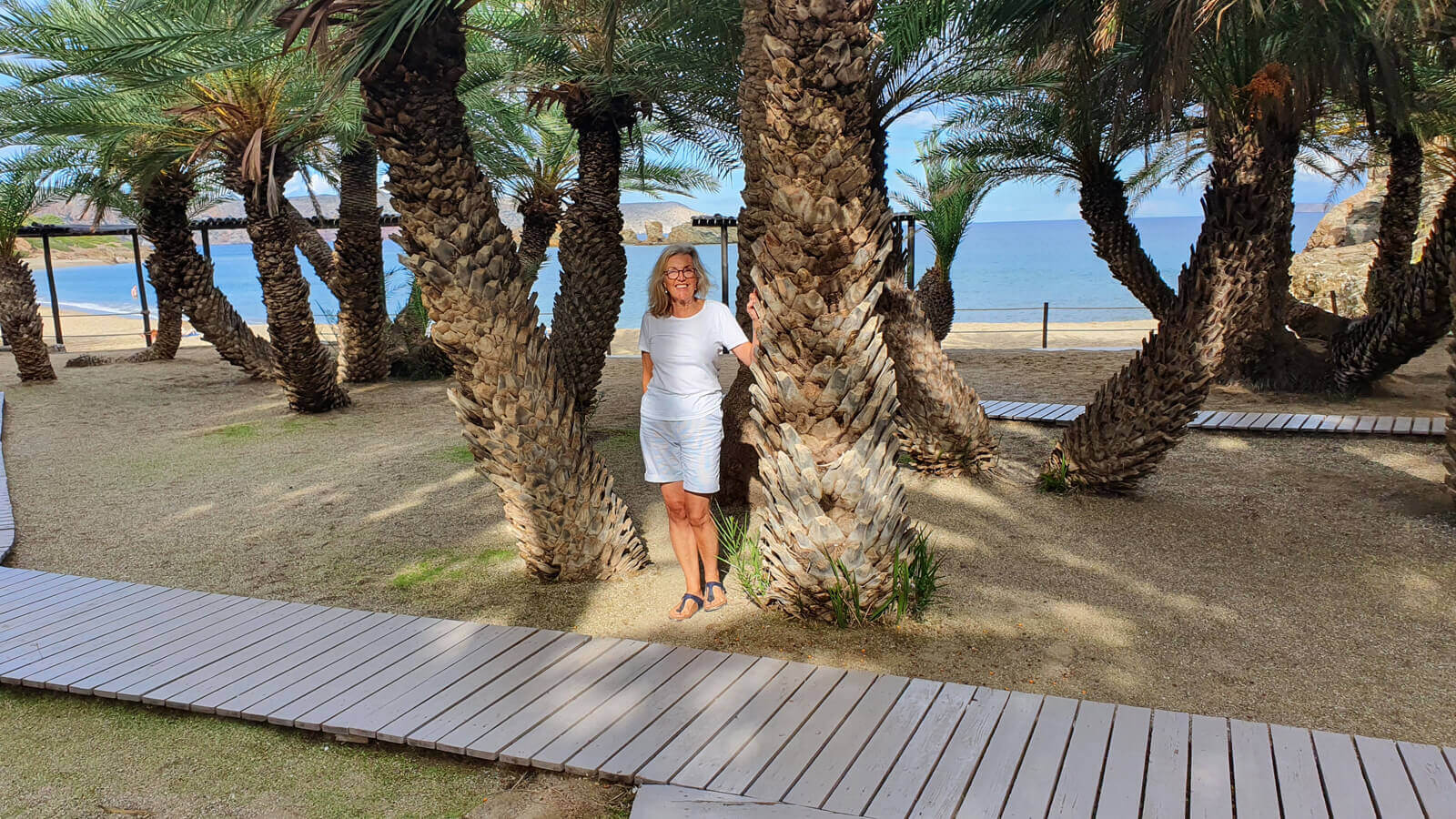
Sitia, on the north coast, is the main town in Eastern Crete. An economic centre and focal point for the surrounding agricultural villages, bustling with laid-back local flavour and quite limited tourist accommodation. We were only staying one night and found a small budget hotel on the seafront, Hotel Itanos; perfectly fine. We went off to explore this very Greek, compact, town. The remains of the Venetian fortress overlook the harbour, surrounded by cafes and traditional tavernas, busy with locals promenading and eating. Other than that, little of note, though, apparently, there are some nice beaches.
Tour Itinerary
Chania – 2 nights, Monastery Venetian Harbour – 2 nights, B&B €90 per night
Rethymnon, Pepi Boutique – 1 night, B&B €95
Scalani Hills Residences – 1 night, B&B, €96 info@scalanihills.com
Koutsounari, Apothikes Beach Suites – 1 night
Koutsounari, Kakkos Bay Hotel – 2 nights, B&B €90 per night
Makriyialos, White Pearl Studio – 2 nights, €60 per night
Sitia, Itanos Hotel – 1 night, B&B €50

